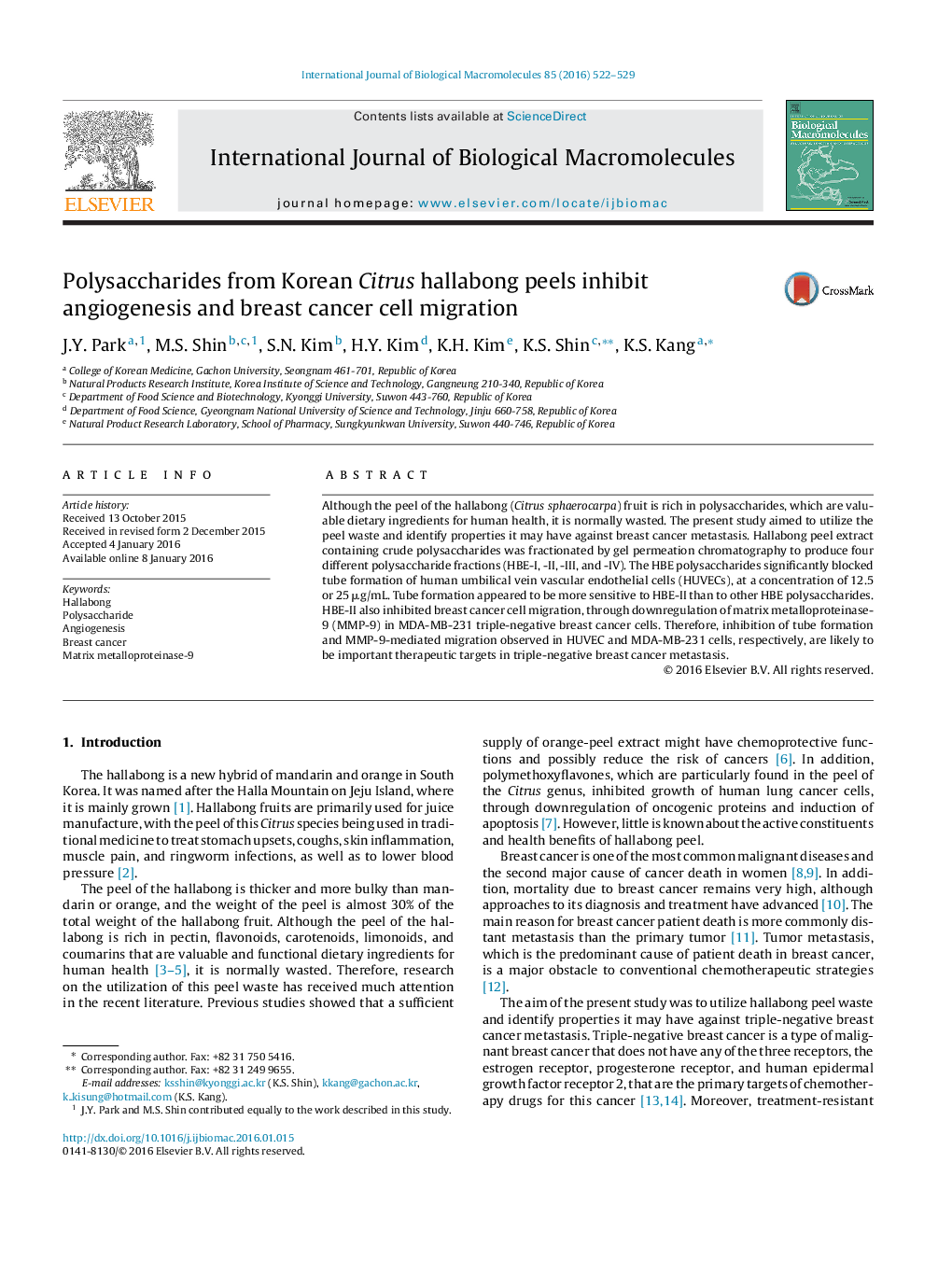| Article ID | Journal | Published Year | Pages | File Type |
|---|---|---|---|---|
| 1985851 | International Journal of Biological Macromolecules | 2016 | 8 Pages |
Abstract
Although the peel of the hallabong (Citrus sphaerocarpa) fruit is rich in polysaccharides, which are valuable dietary ingredients for human health, it is normally wasted. The present study aimed to utilize the peel waste and identify properties it may have against breast cancer metastasis. Hallabong peel extract containing crude polysaccharides was fractionated by gel permeation chromatography to produce four different polysaccharide fractions (HBE-I, -II, -III, and -IV). The HBE polysaccharides significantly blocked tube formation of human umbilical vein vascular endothelial cells (HUVECs), at a concentration of 12.5 or 25 μg/mL. Tube formation appeared to be more sensitive to HBE-II than to other HBE polysaccharides. HBE-II also inhibited breast cancer cell migration, through downregulation of matrix metalloproteinase-9 (MMP-9) in MDA-MB-231 triple-negative breast cancer cells. Therefore, inhibition of tube formation and MMP-9-mediated migration observed in HUVEC and MDA-MB-231 cells, respectively, are likely to be important therapeutic targets in triple-negative breast cancer metastasis.
Related Topics
Life Sciences
Biochemistry, Genetics and Molecular Biology
Biochemistry
Authors
J.Y. Park, M.S. Shin, S.N. Kim, H.Y. Kim, K.H. Kim, K.S. Shin, K.S. Kang,
